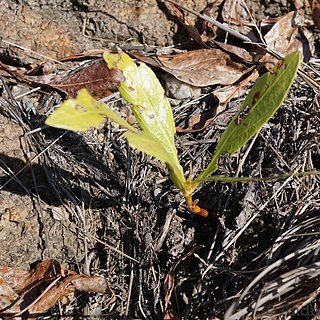Corolla shortly apiculate, usually 5-tailed in bud; tube cylindric, glabrous or pubescent, with a ring of deflexed hairs within, sparsely to densely pilose at the throat; lobes reflexed, usually shortly apiculate, glabrous within, about equalling the tube.
Ovary 2-locular, each locule with a solitary pendulous ovule; style slender, slightly exserted; pollen presenter cylindric or subcapitate, deeply bilobed.
Leaves opposite or in whorls of 3–4, mostly fairly shortly petiolate; stipules triangular, usually shortly subulate-caudate at the apex.
Calyx limb-tube ± obsolete; lobes 5, erect, linear-oblong, oblong, lanceolate or ± triangular, obtuse or subacute.
Flowers in simple or branched cymes or fascicles, sometimes borne at lower often leafless nodes; bracts small.
Suffrutescent herbs, mostly under 30 cm tall, with several to many stems from a woody rhizome.
Stamens inserted at the throat, the anthers oblong or lanceolate, just exserted.
Fruit globose or obpyriform, didymous or asymmetrical, containing (1)2 pyrenes.

